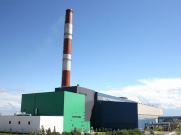Enefit Green’s heat production increased by 59% in March
Options
Enefit Green’s heat production increased by 59% in March

Aavo Kärmas, the Chairman of the Board of Enefit Green said that the heat production in March was the same as in February. “The main reason for high production of heat was the cold weather we had in March, of course. The average air temperature was more than 2 degrees lower from the norm, according to data received from the weather service. Heat production increased at Iru, Paide as well as Valka power stations,” said Kärmas.
The leader of Enefit Green added that the biggest contribution to the production of March was made by heat produced from gas at Iru power station. The gas-fuelled energy block at Iru power station put into operation in the end of February, produced a total amount of 36 gigawatt-hours of heat and 16 gigawatt-hours of electricity within close to 9 days. In addition, gas-fuelled water heating boilers are located at Iru power station.
Enefit Green’s heat production increased also compared to the first quarter of 2017. While 266 gigawatt-hours of heat was produced within the first three months of 2017, then in the first quarter this year, the amount was 306 gigawatt-hours, which is 15% more.
Enefit Green is a renewable energy company, part of Eesti Energia Group, which produces energy from wind, water, sunlight, biomass and mixed municipal waste. For covering peak loads, gas and fuel oil are used as fuel as well, if needed. The largest production units of Enefit Green are Iru, Paide and Valka power stations and Aulepa, Narva, Paldiski and Virtsu wind parks. In addition, Keila-Joa hydro power station is owned by Enefit Green.